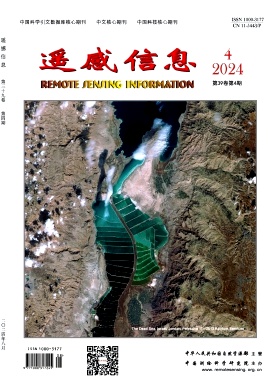Evaluation of elevation derived from interferometric SAR data with DEM
引用次数: 0
Abstract
Interferometric SAR is a stereoscopic method to obtain contours of ground elevation. A lot of studies have been done to derive the elevation map from SAR data, however, only few studies have been reported to examine the difference between the elevation map and DEM (Digital Elevation Model). In this paper, the authors compare the surface elevation map derived from interferometric SAR data with DEM, and evaluate the error distribution of the elevation map. The root mean squared error is found to be 33 m, and it agrees with the absolute vertical accuracy of DEM. The error distribution is also evaluated, and is verified to be approximately Gaussian. The large errors tend to appear locally at shadowed or steep sloped area, where phase noise or phase unwrapping error is large.基于DEM的干涉SAR数据高程评估
干涉SAR是一种获取地面高程等高线的立体方法。从SAR数据导出高程图的研究已经很多,但是研究高程图与DEM (Digital elevation Model)之间的差异的研究却很少。本文将干涉SAR数据得到的地表高程图与DEM进行了比较,并对高程图的误差分布进行了评价。均方根误差为33 m,与DEM的绝对垂直精度一致。对误差分布进行了评估,并验证了误差分布近似为高斯分布。在相位噪声或相位解包裹误差较大的阴影区或陡坡区,往往局部出现较大的误差。
本文章由计算机程序翻译,如有差异,请以英文原文为准。
求助全文
约1分钟内获得全文
求助全文
来源期刊
自引率
0.00%
发文量
3984
期刊介绍:
Remote Sensing Information is a bimonthly academic journal supervised by the Ministry of Natural Resources of the People's Republic of China and sponsored by China Academy of Surveying and Mapping Science. Since its inception in 1986, it has been one of the authoritative journals in the field of remote sensing in China.In 2014, it was recognised as one of the first batch of national academic journals, and was awarded the honours of Core Journals of China Science Citation Database, Chinese Core Journals, and Core Journals of Science and Technology of China. The journal won the Excellence Award (First Prize) of the National Excellent Surveying, Mapping and Geographic Information Journal Award in 2011 and 2017 respectively.
Remote Sensing Information is dedicated to reporting the cutting-edge theoretical and applied results of remote sensing science and technology, promoting academic exchanges at home and abroad, and promoting the application of remote sensing science and technology and industrial development. The journal adheres to the principles of openness, fairness and professionalism, abides by the anonymous review system of peer experts, and has good social credibility. The main columns include Review, Theoretical Research, Innovative Applications, Special Reports, International News, Famous Experts' Forum, Geographic National Condition Monitoring, etc., covering various fields such as surveying and mapping, forestry, agriculture, geology, meteorology, ocean, environment, national defence and so on.
Remote Sensing Information aims to provide a high-level academic exchange platform for experts and scholars in the field of remote sensing at home and abroad, to enhance academic influence, and to play a role in promoting and supporting the protection of natural resources, green technology innovation, and the construction of ecological civilisation.

 求助内容:
求助内容: 应助结果提醒方式:
应助结果提醒方式:


